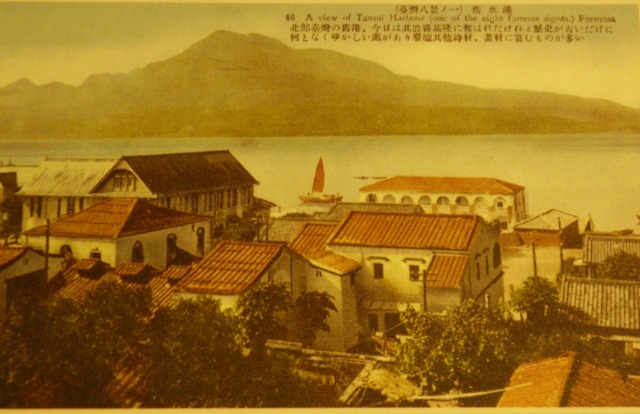
Tamsui is a charming riverside town near the mouth of the Tamsui River about 25 km north of Taipei.
It was one of the four ports in Taiwan opened up to foreign trade by the Qing government in the 1860s and became home to a small but influential foreign community.

One foreigner in particular played an important role in the town’s development and is still fondly remembered today by the local inhabitants. His name was George Leslie Mackay, a Canadian of Scottish ancestry, who arrived in Tamsui in 1872 as a missionary for the Canadian Presbyterian Church. Apart from two periods of home leave, he remained in Tamsui until his death 30 years later, while dedicating his life to building an indigenous church led by local preachers.

From the outset, he concentrated on learning Taiwanese Hokkien in order to be able to preach in the local language. He memorised 100 Chinese characters a day (that’s impressive – I struggled with 10 when I was studying Japanese kanji characters!).

He remained aloof from the foreign community in town, seeing his mission as converting the ‘heathen natives’ rather than tending to the spiritual needs of his fellow westerners. They probably shunned him too, especially after he married a local girl, something which was not the done thing in those stuffy and discriminatory late-Victorian days.

His marriage to the seventeen year old Tiu Chhang Mia (or Minnie as she became known) not only provided him with a loving family with two daughters and a son, but also helped to spread his message to the local female community.

Still he found it hard going in the early days to make converts among the Taiwanese who nicknamed him the black bearded barbarian and regarded him with suspicion and his religion with hostility.

Good results were finally achieved through his perseverance and tactic of providing free medical and dental treatment to the locals. His medical qualifications may have been limited but he could still do better than the local quacks.

Education was his other entrée into the local community and he established the Tamsui Girls’ School and another school, ‘Oxford College’ made possible with contributions from the people of his hometown in Oxford County in Upper Canada.

By means of this three-in-one evangelistic method: preaching, education and medical work, he successfully founded sixty churches with thousands of converts by the time of his death in 1901.

Even in death he remained segregated from the other foreigners in town by specifying in his will to be buried in land separated from the Tamsui Foreign Cemetery by a wall. Other family members and former students have since been buried next to him in what is now called the Mackay Family Cemetery.

Tamsui is easy to reach from Taipei being the final station on the red Tamsui-Xinyi MRT line and there is a lot more to see besides Mackay’s legacy.

